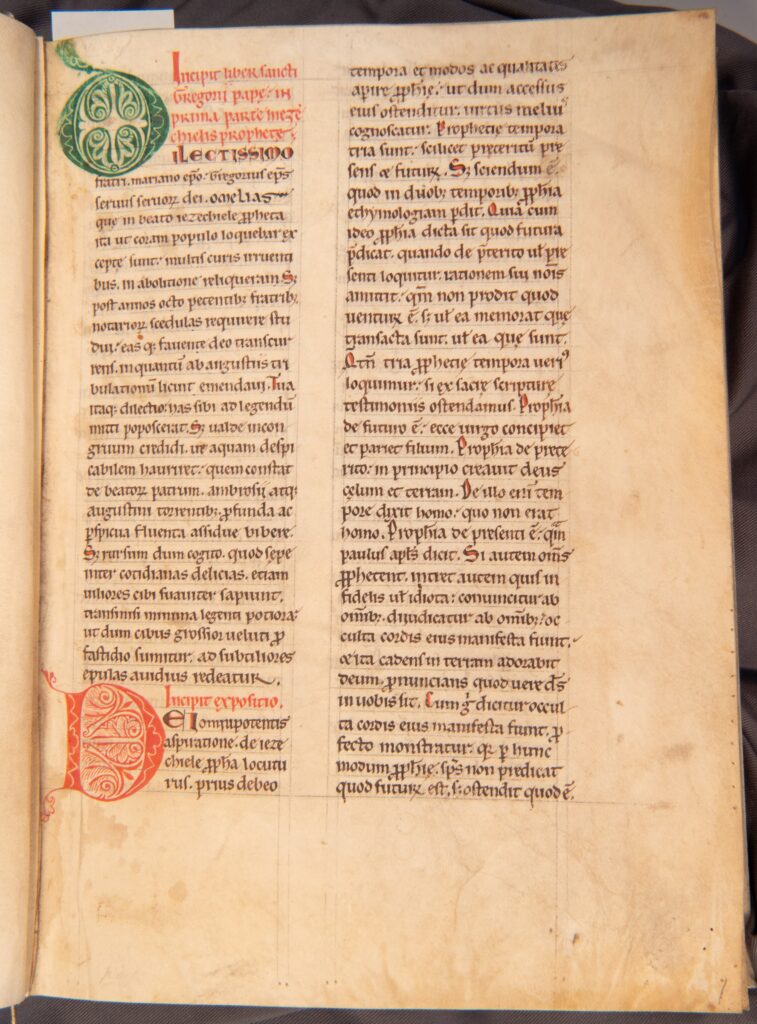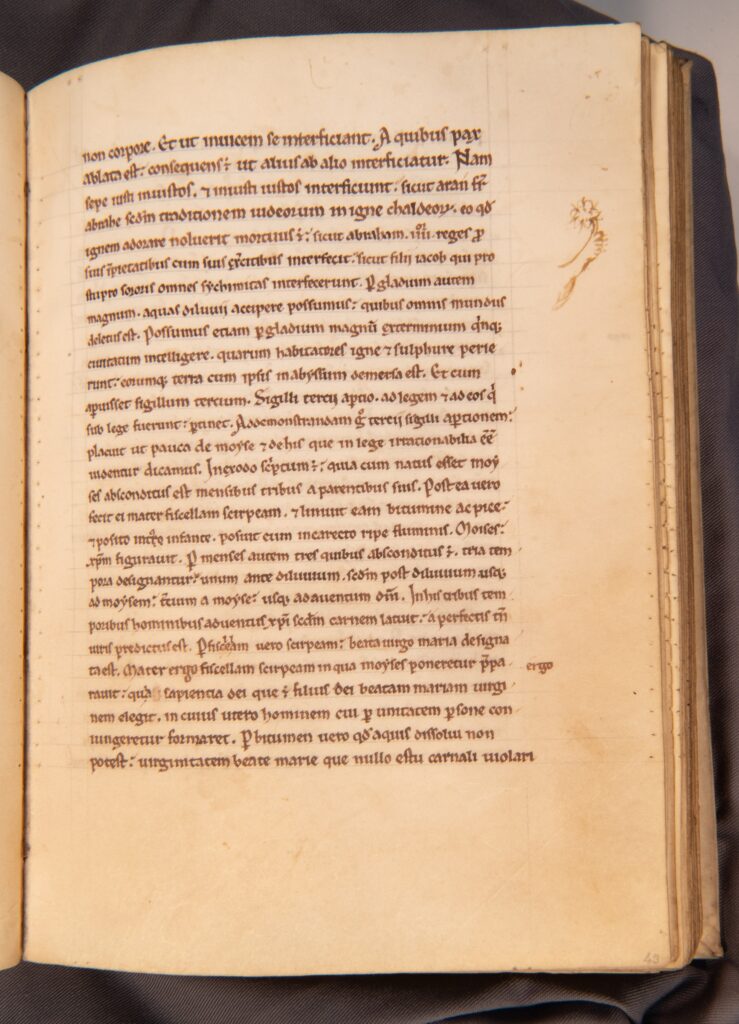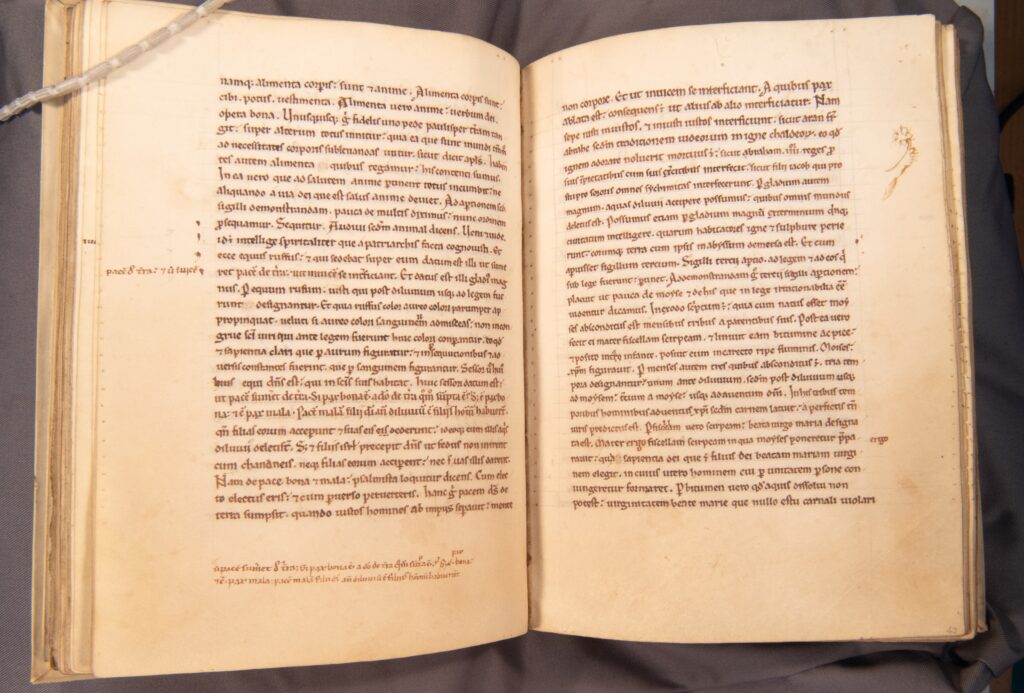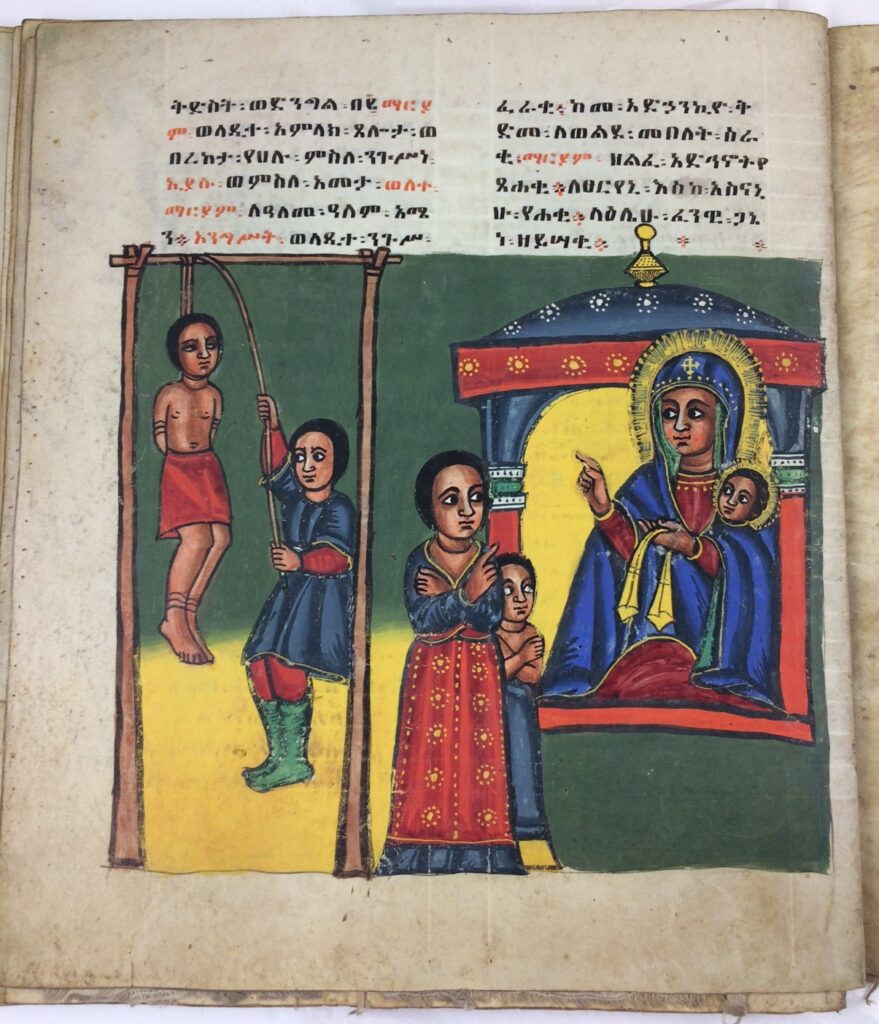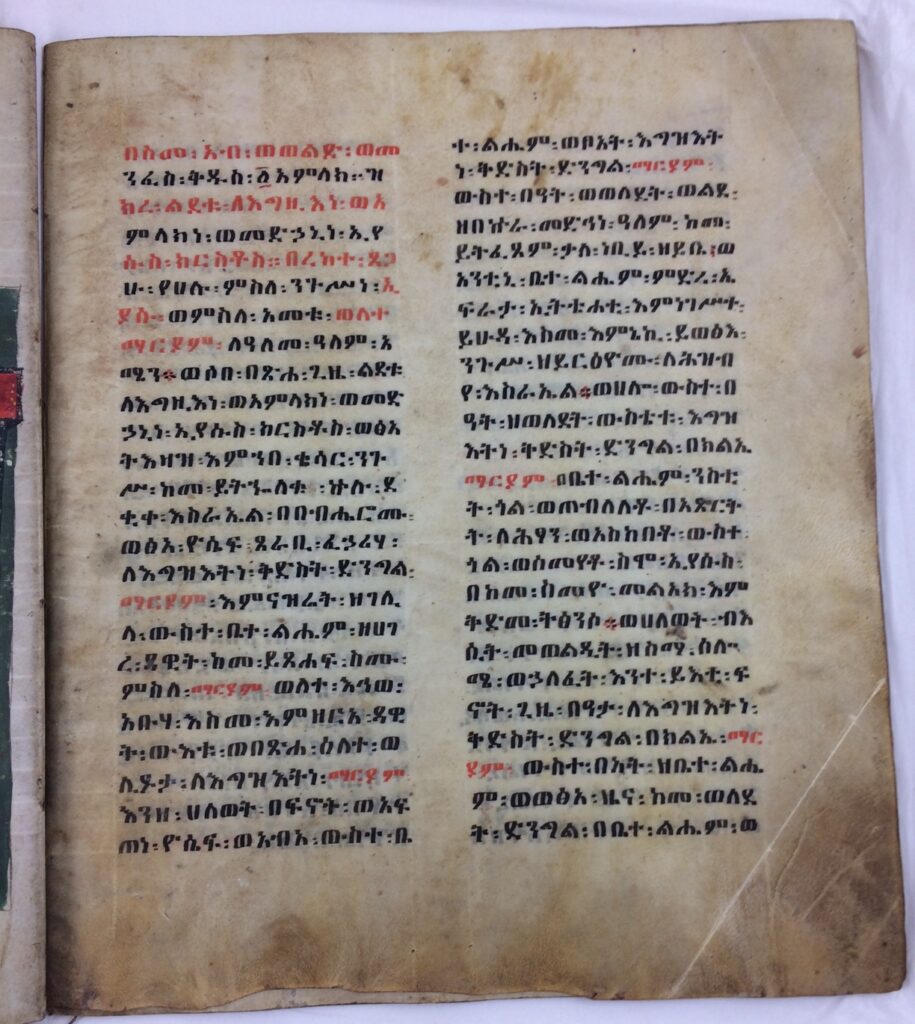In this exhibition Written by Hand | Early Manuscripts in Armagh Robinson Library, we take a closer look at some of the early manuscripts in our collection.
The word manuscript comes from the Latin manu (by hand) and scriptus (written), and can mean two things:
- a book, document, or piece of music written by hand rather than typed or printed.
- an author’s handwritten or typed text that has not been published yet.
In this exhibition we explain how the early manuscripts were made, how the pages are laid out, how to read the texts, and how different the attitude towards medieval manuscripts is nowadays compared to the 17th and 18th century.
Most medieval manuscripts were made from parchment, which is prepared animal skin. Calf skins would be used for the highest quality parchment, called vellum, from the French word veau for calf.
To make parchment, a skin was first soaked in a lime bath to remove hair and flesh. It was then stretched on a frame and scraped clean and thin. Once the skin was dried, it was cut into sheets to create pages.
The stretching of the skin could cause tears or holes due to insect bites, scars, or other damage. These skins were still used however: text was simply written around the holes, or the holes were incorporated into an illumination or decoration.
At the bottom of these two pages of this manuscript you can still see the pattern of the hair follicles!
Super Evangelia De Dominicis Diebus Guillaume Pérault [?] 1190-1255 P001941751
To make sure that manuscript pages looked uniform, they were pricked and ruled. A template page was ruled and the end of the lines pricked through unto other pages.
Usually the text was written on unfolded pages before being gathered into sections. The person writing, called the scribe, often left spaces for decoration, or for differently coloured or sized text.
In this 12th century manuscript a large tear is neatly sewn shut.
The pricks and rules can be seen as well, the pricks on the outer edges and the rules on the inner edges.
Moralia, sive Expositio in Job. Moralium Partes III & IV, Liber XI-XXII. Incipit: Incipit Pars ter.a. Moralia beata GG pp per contemplatione sumota in lib. beati Job. 1100-1200 P001937827
Medieval manuscripts did not have a main title as such. People often used the first incipit, the first few words of a text or chapter, as the main title.
The word incipit is Latin and means ‘it begins’. At the end of a text or chapter you can often find the phrase explicit, also Latin, meaning ‘it is ended’.
Incipits and explicits, as well as other sections that needed emphasis, were written in red ink.
These parts of the text were called rubrica, after the Latin for ‘red ochre’.
Sometimes rubrica are accompanied by a miniature or an illuminated letter.
In the first image of this manuscript you can see three characteristics together: a rubric explicit/incipit, followed by an illuminated capital Q!
The second image shows two rubric incipits at the start of the chapters.
S. Gregorii Magni, Homeliae in Ezechielem; … Saint Gregory the Great 1175-1200 P002472589
You will often find marks made by the reader in the margins of medieval manuscripts: these are called marginalia. These could be punctuation, comments, explanations, critiques, doodles, or decorations.
Punctuation marks were created to mark important parts of the text. These could be, for example:

The manicule, from the Latin maniculum for ‘little hand’, is a hand with a pointy finger. It is sometimes possible to identify a reader by their specific manicule design!
A flower was often used for a text worth quoting.
In this manuscript the manicule in the margin is pointing upwards and sprouting a flower. The reader was possibly trying to make sure that this passage was read and re-read!
Expositio Super Apocalipsim Berengaudus, of Ferrières 1175-1200 P001941743
Many medieval manuscripts were written in Latin, as it was the language of the Church and scholars. Others however were written, or translated, into other languages.
In Ethiopia, manuscript production flourished until well into the 19th century. These were primarily written in the ancient African language Gəˁəz, the language of the Ethiopian Orthodox Church. They were often highly decorated with illustrations.
This Ethiopian manuscript was identified by professor Wendy Belcher, and Jeremy R. Brown of the Princeton Ethiopian Miracles of Mary project.
We are extremely grateful for their help, as we do not have the knowledge of either the language or the handwriting!
Thirty Five Miracles of Saint George, Täʾammǝrä Giyorgis, ተአምረ፡ ጊዮርጊስ; Six Miracles of Mary, Täʾämmǝrä Maryam, ተአምረ፡ ማርያም Eleven Miracles of Jesus, Täʾämmǝrä ʾIyyäsus, ተአምረ፡ ኢየሱስ፡. 1682 – 1788 P001947393
With the arrival of the printing press, many manuscripts were replaced by printed copies of the books.
Waste material from discarded and broken manuscripts was put to good use by bookbinders: they ended up as covers, endpapers, or spine reinforcements for these printed books!
In these two printed works, we can see evidence of medieval manuscripts having lost their scholarly value! A scrap of parchment reinforces the spines.
The binder of the earlier, larger work even used pages from an incunabula (a printed book from before 1500) as flyleaves!
L. Coelii Lactantii Firmiani Divinarum Institutionum Libri VII. Lucius Cecilius Firmanus Lactantius 1570 P000988630
Hugo Grotius De veritate religionis Christianae. : Editio novissima, in qua ejusdem annotationes suis quaeque paragraphis ad faciliorem usum subjecta sunt. Hugo de Groot 1669 P001209554








